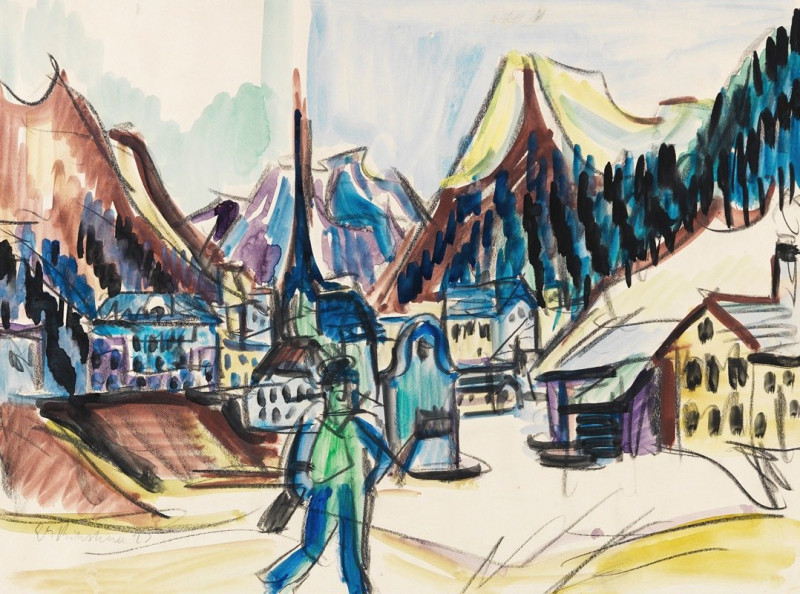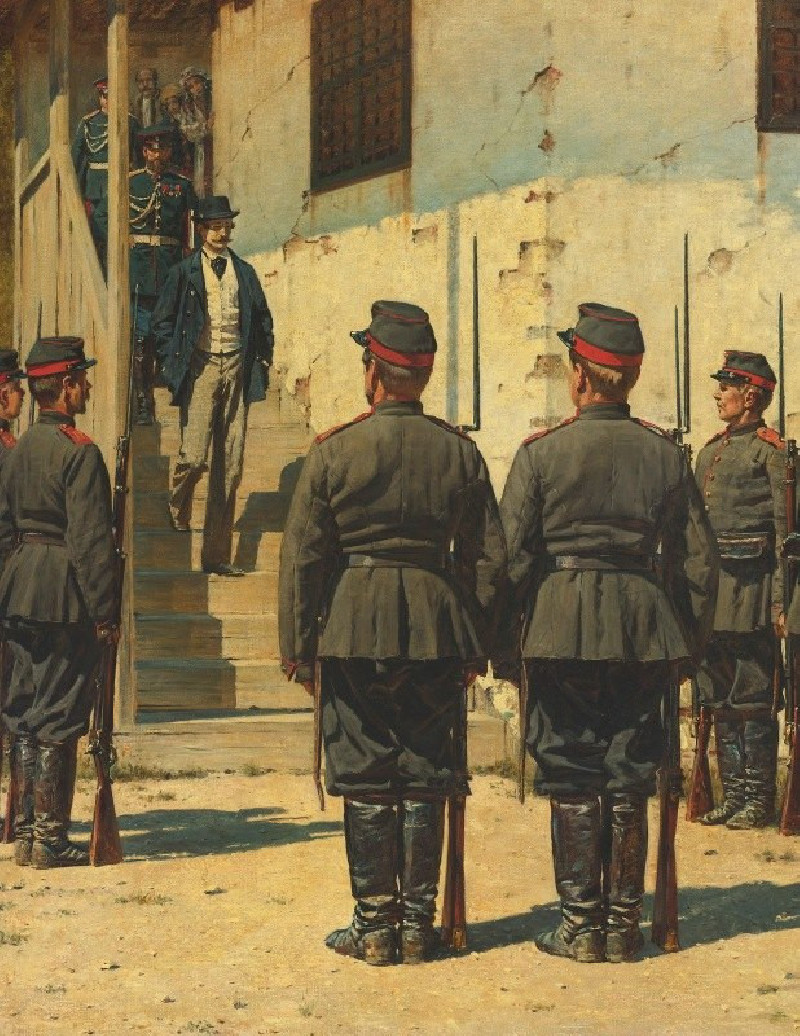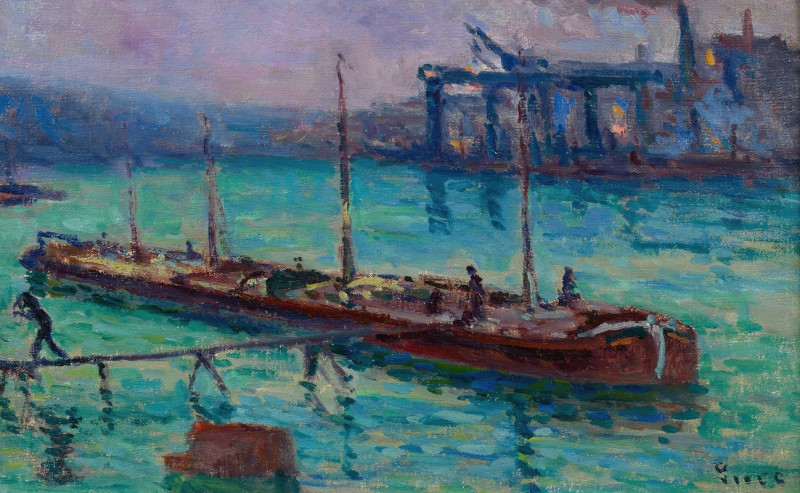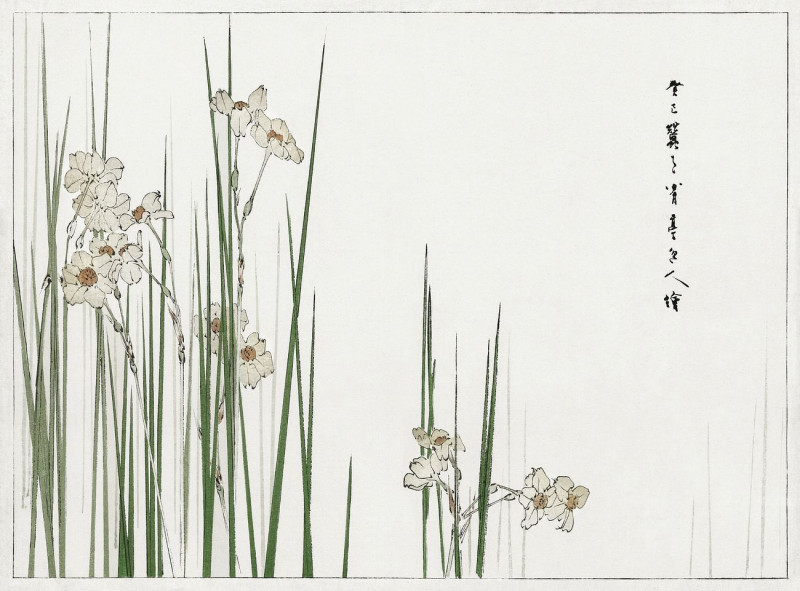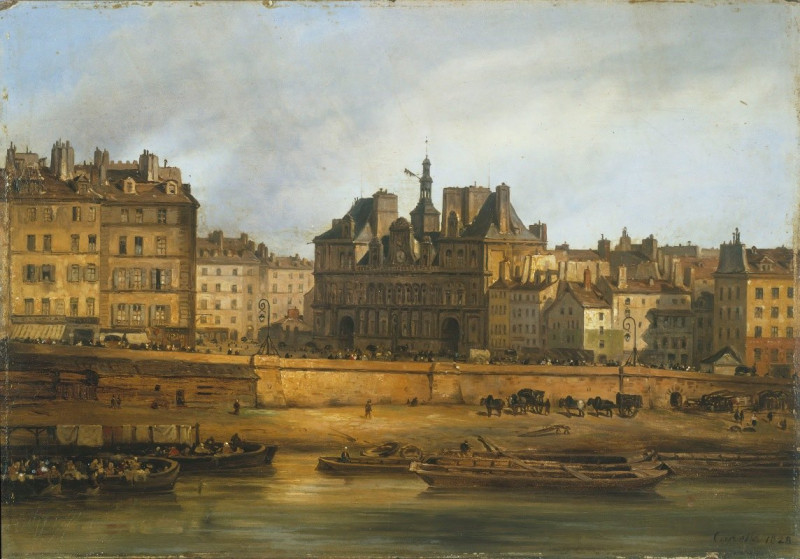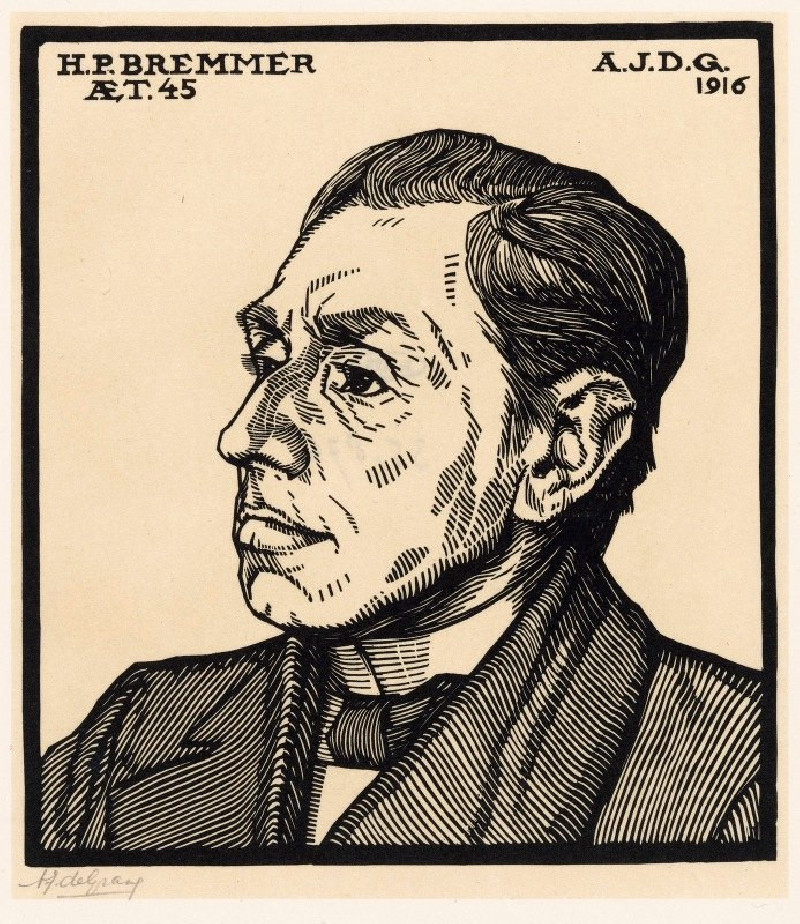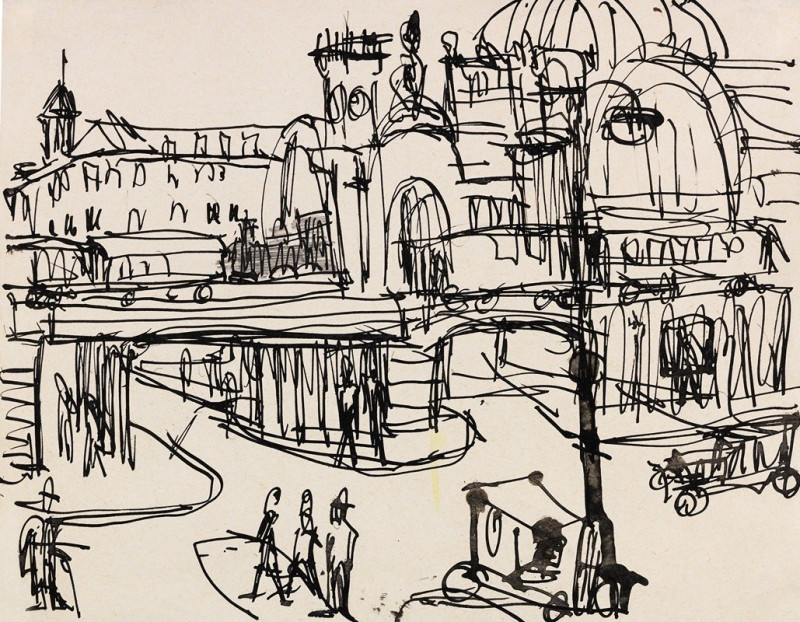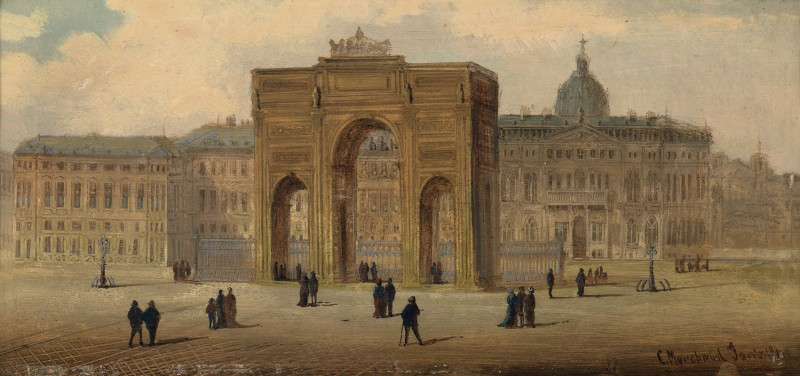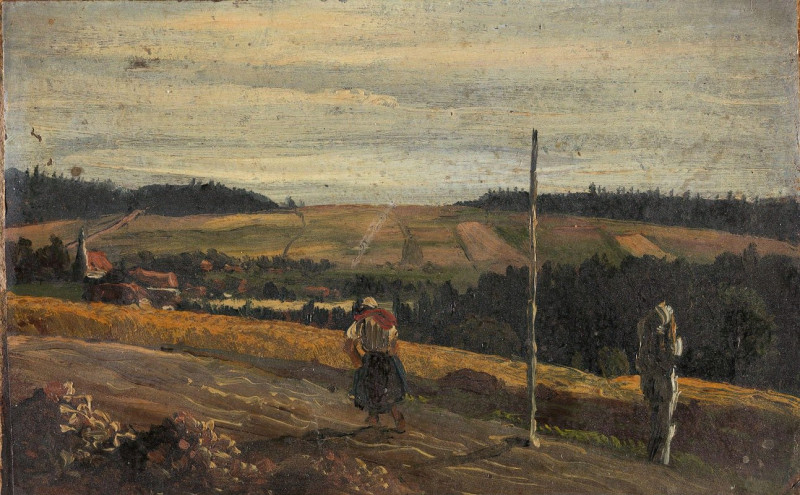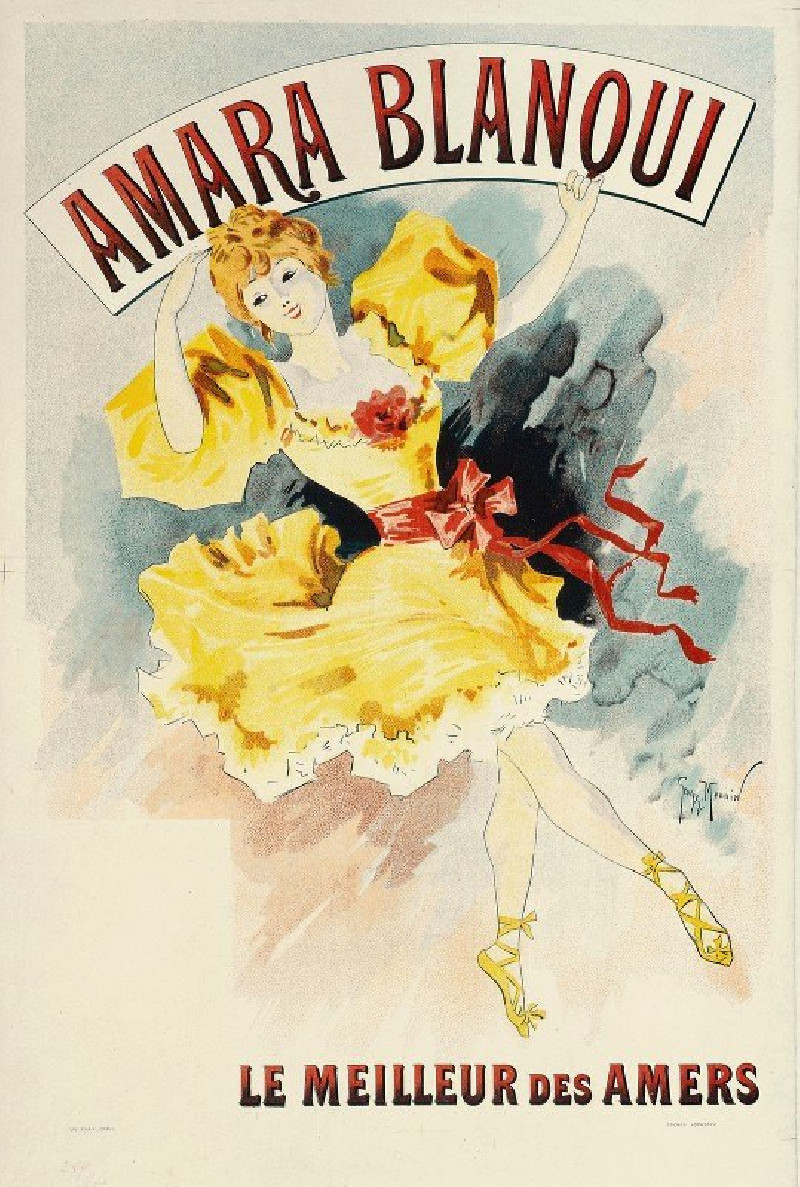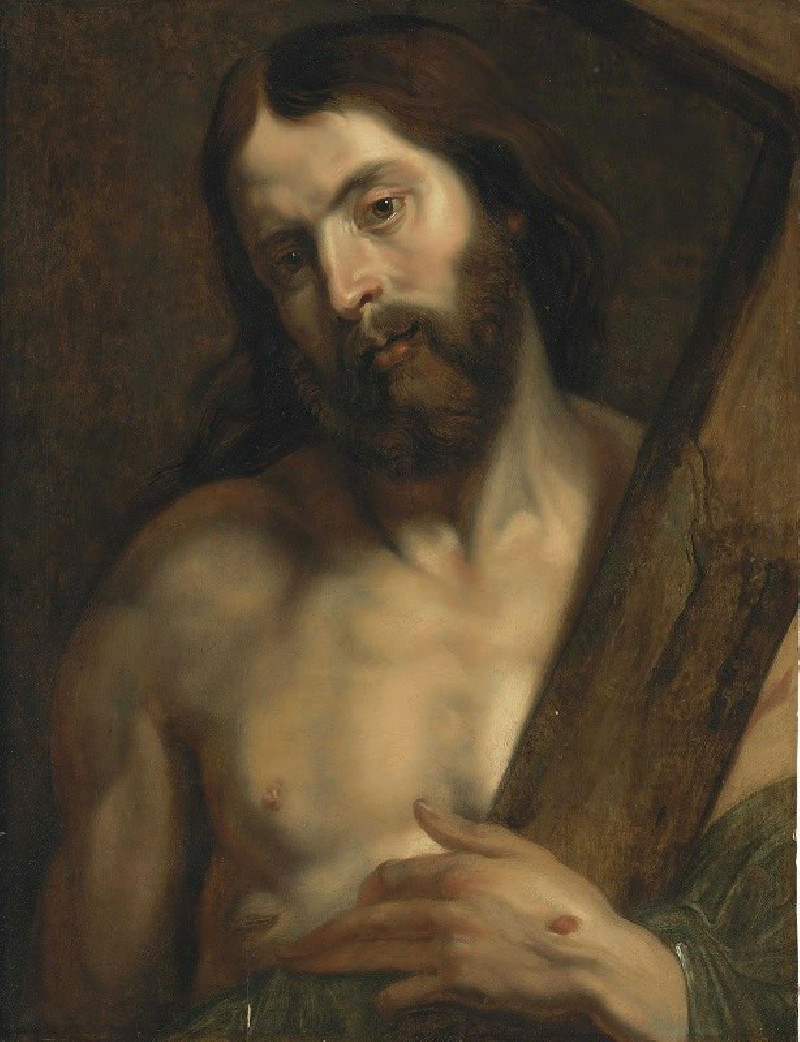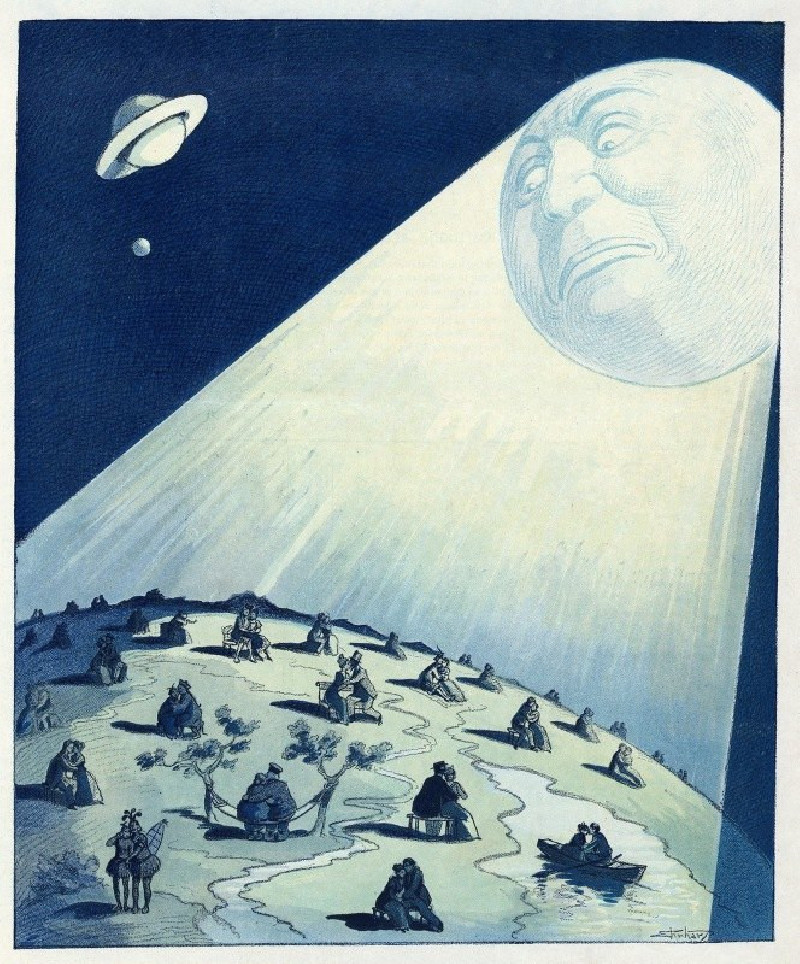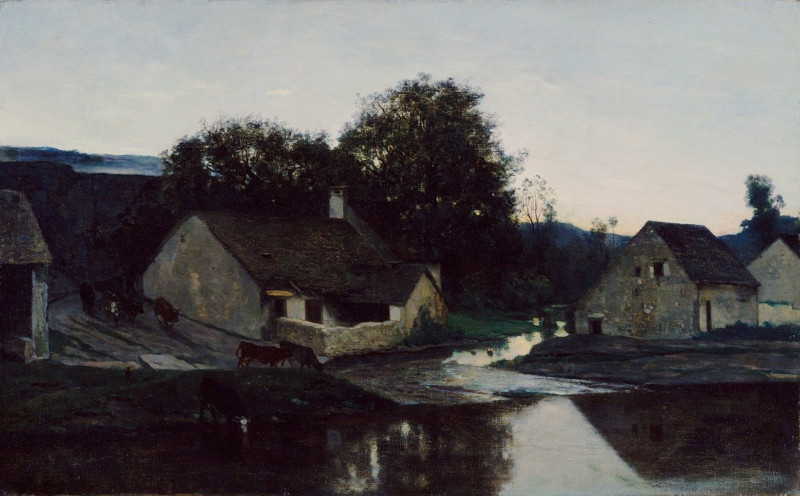Ansicht von Davos (Landschaft bei Davos im Winter) (1925)
Technique: Giclée quality print
Recommended by our customers
More about this artwork
"Ansicht von Davos" (Landscape of Davos in Winter), painted by Ernst Ludwig Kirchner in 1925, is a vibrant and dynamic representation of the Swiss alpine town Davos during the winter season. In this captivating piece, Kirchner employs a palette of bold and intense colors, which breathes life into the snow-covered landscape, providing a stark contrast to the typically subdued tones associated with winter scenes.The painting portrays a bustling village nestled among towering mountains. The angular and exaggerated forms of the buildings and mountains suggest a sense of movement and tension, characteristic of Kirchner's expressive style. The use of sharp lines and swirling contours helps to create an almost dizzying effect, echoing the raw energy of nature and humanity coexisting in this cold environment.In the foreground, a figure strides confidently through the village square, wrapped against the chill. This lone figure, depicted in shades of green and blue, adds a human element to the scene, inviting viewers to imagine themselves walking alongside in the crisp mountain air.Kirchner's work is not just a mere representation but an emotional interpretation that captures the essence and atmosphere of Davos. The painting challenges conventional landscapes with its innovative use of color and form, making it a perfect example of Kirchner’s groundbreaking approach to expressionism.
Delivery
Returns
Ernst Ludwig Kirchner (1880–1938) was one of the most important German Expressionist painters. He was a co-founder of Die Brücke, a group of German expressionist artists formed in Dresden in 1905. Die Brücke and Kirchner took inspiration from Vincent Van Gogh and Edvard Munch, as well as African and Oceanic art. They used woodblock printing as a medium to showcase their signature style: flat, unrealistic images with vivid colors. The recurring themes in Kirchner's artworks included exotic cultures, faraway landscapes, self-portraits, dancers and Berlin street life. His paintings and prints effectively portrayed non-European cultures despite the fact that he never traveled outside of Europe.

